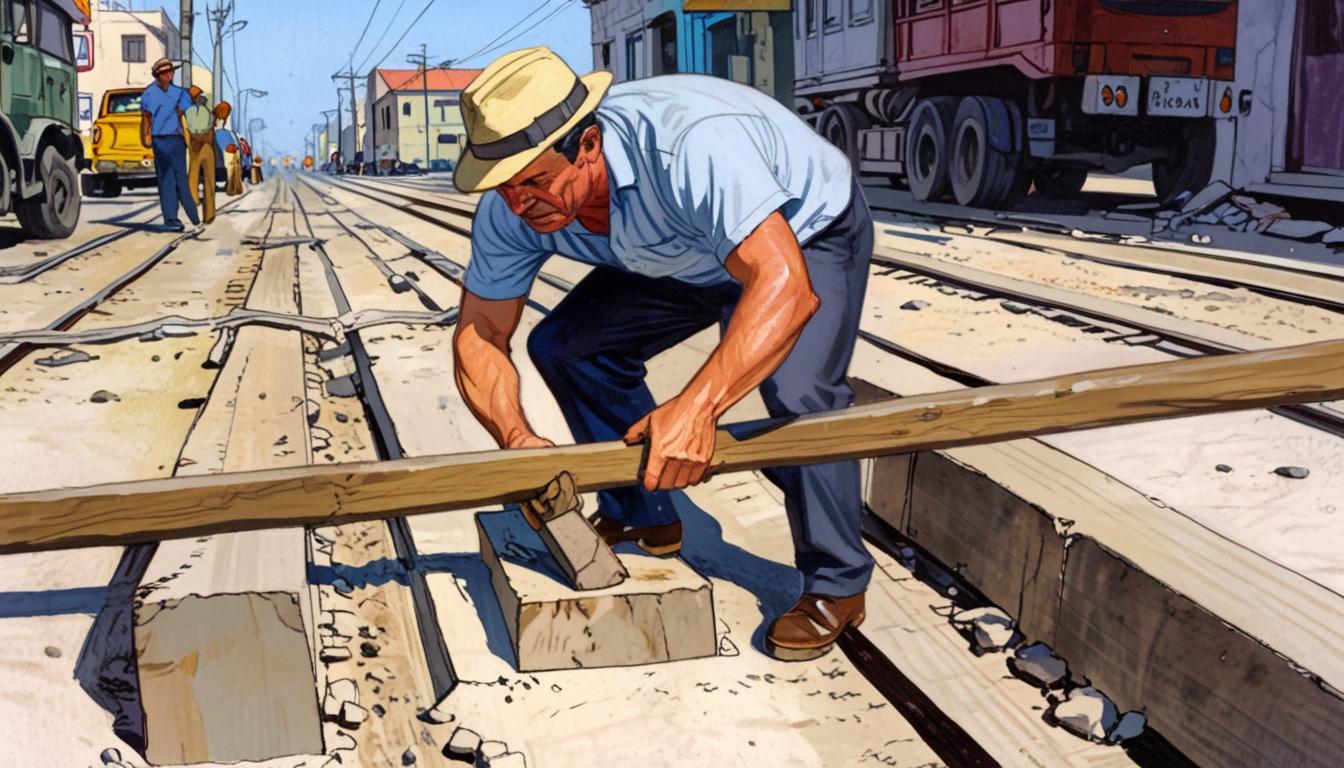In the municipality of Arroyo Naranjo, Havana, authorities apprehended a man in the act of dismantling part of the railway infrastructure, highlighting ongoing concerns about Cuba's transportation system security. The incident occurred in the Mantilla area, where quick intervention by local residents enabled a sector chief from the National Revolutionary Police to detain the suspect while he was using a sledgehammer to remove support bars from the track sleepers. The pro-government Facebook page El Cubano Fiel reported that the man, apparently motivated by construction needs, failed to consider the severe safety risks his actions posed, which could have resulted in train accidents with significant casualties and material damage.
El Cubano Fiel described the arrest as evidence of effective community surveillance and rapid law enforcement response to crimes threatening critical infrastructure. This event underscores the challenges faced by Cuba’s railway system, which is currently experiencing serious technical and operational difficulties.
The Cuban railway network struggles with a chronic shortage of spare parts and degrading rolling stock, factors that contribute to reduced service quality and reliability. Transportation Minister Eduardo Rodríguez Dávila shared detailed figures on Facebook, indicating that out of 20 needed locomotives in 2024, only around 14 were operational on average. Furthermore, just 63% of planned railway cars were available for service, hindered by unresolved technical issues and insufficient foreign currency to fund maintenance.
Despite these limitations, the railway saw a notable improvement in performance. Passenger transport revenue reached 107.75% of the planned target for 2024, totalling 65,379,814 Cuban pesos and surpassing figures from the previous year. This increase reflects more efficient ticket sales and a rising demand for train travel, which remains the most affordable transport option for many Cubans. The railway system transported 785,272 passengers during the year, exceeding forecasts by 8.31% thanks to optimised ticketing and the addition of new stops aimed at improving passenger access.
Safety on the railways has also seen progress. Minister Rodríguez reported a 14% reduction in railway accidents in 2024, with a total of 137 safety-related incidents compared to 160 in 2023. However, fatal accidents continue to occur, including 17 pedestrian deaths recorded during the year.
The Cuban government has officially acknowledged the deep crisis affecting the island’s public transportation system. Citizens face long waiting times, overcrowded vehicles, and frequent cancellations, all exacerbated by scarce resources in an economically strained environment. Minister Rodríguez addressed these issues in a Cuban Television Information System broadcast, citing the impacts of the global economic crisis, increased pressures from the longstanding U.S. embargo, infrastructure degradation, and shortages of essential supplies.
Efforts to ease vehicle import restrictions were noted but characterised as insufficient to resolve the mobility crisis, which remains a structural problem. In February 2025, Cuban official media, including the Girón newspaper, attributed worsening conditions to U.S. sanctions, linking the embargo to power outages, price increases, and transport difficulties. Independent analysts, however, point to government inefficiency and a lack of comprehensive economic reforms as significant contributing factors.
This series of developments reveals the complex and multifaceted challenges confronting Cuba’s railway and public transportation systems, amid ongoing economic and infrastructural constraints.
Source: Noah Wire Services
